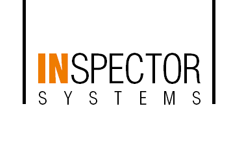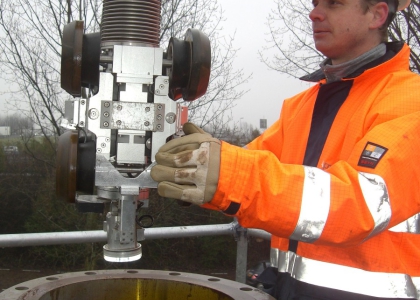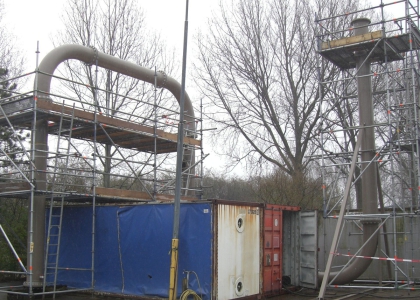The Shell oil-platforms in the Gulf of Mexico are designed for an oil production time of around 20 years. During the course of various modern and expansion measures the undersea offshore risers are to be inspected to see if a longer exploitation time is possible using the pipeline network currently in operation.
In the near future, the condition of the pipes, and in particular the welding seams, is to be internally inspected using ultrasound technology.
For this a robot platform is required which can move through the riser pipes with various 3D bends and check the welding seams with a tolerance of one millimetre. And then there is the seawater: The entire inspection robot must also be able to withstand a pressure of over 100 bars.
In order to leave nothing to chance in a project of this type, a preliminary test was specially started in Rotterdam. The DN 300 – 500 ultrasonic inspection robot by INSPECTOR SYSTEMS was used, equipped with ultrasonic test equipment by ApplusRTD.
In an elaborate test structure constructed according to Shell data with a total of 4 x 90° bends and various vertical and horizontal pipeline sections, it could be demonstrated that faults in various welding seams could be found with a positioning accuracy of 1 mm.
Furthermore: In order to emulate practice-relevant conditions, the entire pipeline section was filled with water.
On the basis of positive test results Shell is currently developing a concept for developing a prototype of an inspection robot for inspecting welding seams based on the presented robot technology.



